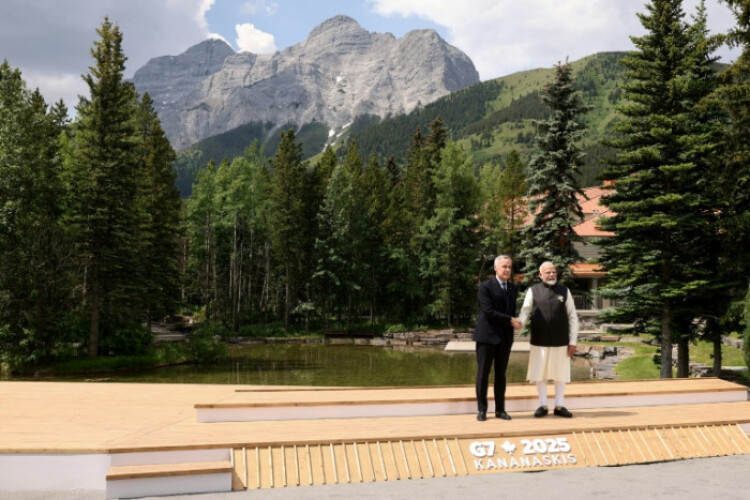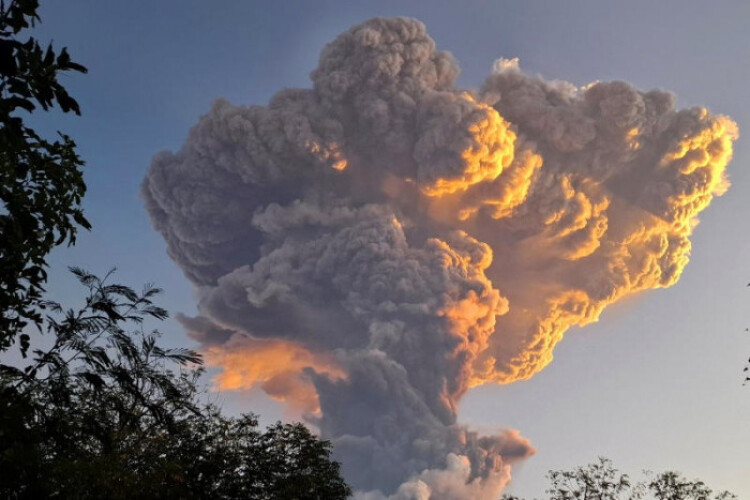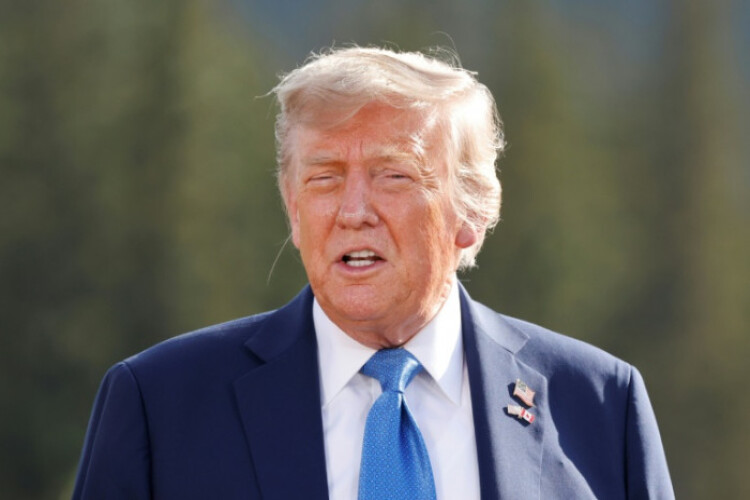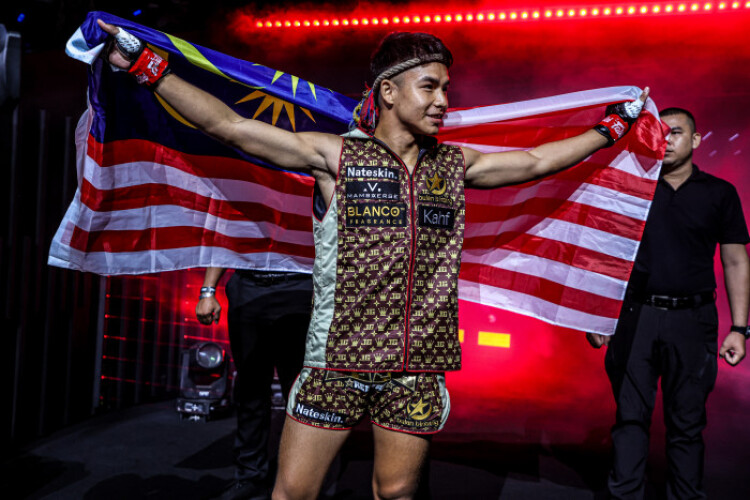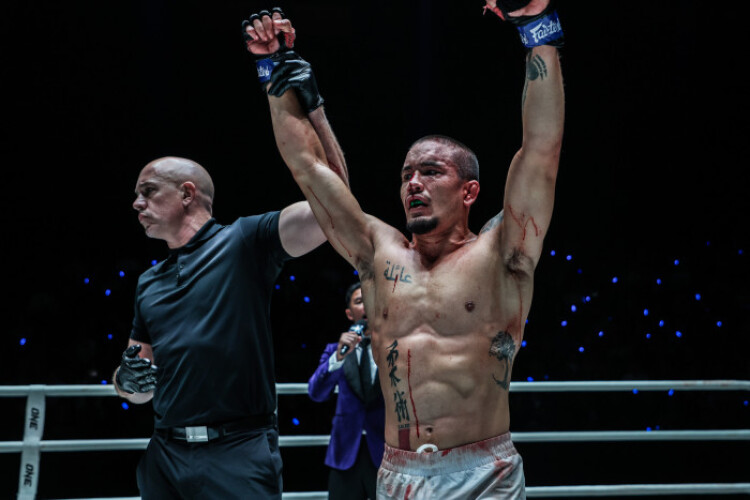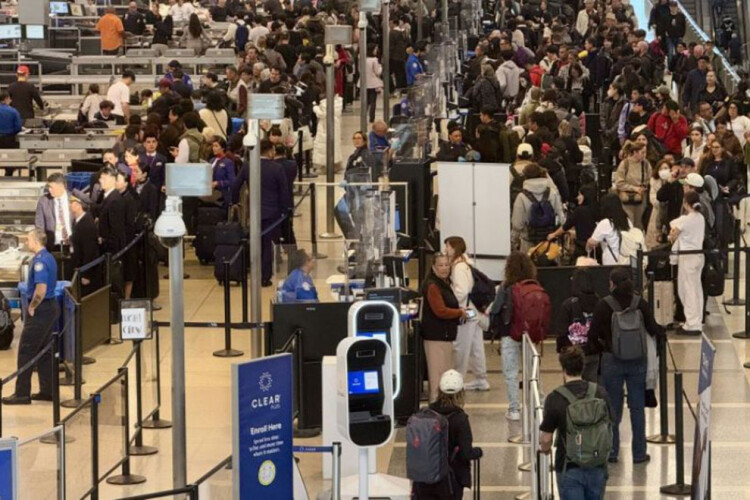
Mr Kumar, an Indian-origin automotive design engineer from Santa Clara, California, who is currently on holiday in Mumbai, said his immigration attorney has asked him to “return to the States before Jan 20” – the day of US President-elect Donald Trump’s swearing-in.
Many Indian H-1B holders told The Straits Times that their employers and lawyers have told them to avoid travelling out of the US in case a visa rule change blocks their re-entry.
The H-1B is a temporary visa to the US for skilled foreign workers with a minimum qualification of a bachelor’s degree. Renewable every three years, it is a stepping stone to permanent residency, better known as a green card.
The engineer’s name has been changed to avoid any impact on his visa or green card applications.
Indian professionals in the US are now anxious about Trump making immigration policy changes that would upend their American dreams.
As the second-largest immigrant group in the US after Mexicans, Indians are at the centre of a high-pitched H-1B debate.
In 2023, 278,148 professionals from India made up more than 72 per cent of H-1B visas issued and renewed, followed by Chinese citizens at 12 per cent. Nearly two in three H-1B holders work in computer-related jobs, with an average annual salary of US$118,000 (S$162,000).
Indians on H-1B visas are doctors, nurses, professors and academics but they are most influential in the US tech industry, occupying leadership roles in companies such as Google, Microsoft and Apple. Cricket player Saurabh Netravalkar, who made headlines for bowling for the US men’s team in the Twenty-20 World Cup in 2024, is an Indian software engineer on an H-1B visa.
Business intelligence developer Vasanth Kalyan, who also holds an H-1B visa, does technical work at a cancer hospital in Tampa, Florida.
For the past few weeks, he has felt “insulted and unsettled” as he read online comments and news commentaries calling H-1B holders like him “cheap labour” and “invaders” spreading the “H-1B virus”. Online remarks have quickly devolved into racist jibes about Indian culture and xenophobic claims about foreigners stealing Americans’ jobs.
“It’s the first time I’m seeing right-wing people in America go beyond their racist hate for Muslims and Mexicans and turn against Indians,” said the 34-year-old software programmer who has lived in the US for eight years.
The debate on H-1B was launched on social media by some far-right Trump supporters after the President-elect on Dec 23 named venture capitalist Sriram Krishnan to an advisory role on artificial intelligence (AI).
Mr Krishnan was born and educated in India. He moved to the US in 2007 to work at Microsoft, following which he held senior roles at Snap, Facebook, Yahoo and Twitter. He became a US citizen in 2016 and is now a venture capitalist.
Trump’s contradictory views
Prominent Trump loyalists criticised Mr Krishnan’s past statements advocating the removal of “country caps for green cards” and to “unlock skilled immigration”, although he has never commented on H-1B visas.
Trump’s advisers such as Tesla founder Elon Musk and Republican politician Vivek Ramaswamy have expressed support for legal, high-skill immigration.
Trump himself has held contradictory views on the programme. At a New Year’s Eve party in 2024, he told reporters: “We need smart people coming into our country.”
But when asked about H-1B during a 2016 Republican presidential debate, he said: “We shouldn’t have it. Very, very bad for workers.”
Trump made immigration a core issue during his campaign, frequently pointing out that 1.6 million people immigrated to the US in 2023, the most in two decades.
Supporters of the H-1B programme, which was started in 1990, highlight its role in filling critical skill gaps in Stem (science, technology, engineering and mathematics) fields and bolstering the American economy. The US Congress caps the H-1B at 85,000 professionals per year, and employers have to prove it does not displace American workers.
Another non-immigrant work visa is H-1B1, which is exclusive to Singaporeans and Chileans who are able to prove they have no intention of migrating to the US. This one-year visa allows professionals to work in speciality occupations, such as engineering, medicine and biotechnology, and is capped at 1,400 Chileans and 5,400 Singaporeans annually.
Republican critics argue that foreign migrants displace American workers and drive down wages. Also critical of the H-1B programme is former Democratic politician and leftist Bernie Sanders, who said it enriches only billionaire businessmen by replacing “good-paying American jobs with low-wage indentured servants from abroad”.
Will legal visa holders be affected?
Many Indian H-1B holders worry that Trump will now yield to growing pressure to extend his tough stance on immigration to legal visa holders, too.
Mr Kalyan, whose wife also holds an H-1B visa, is on edge: “Our entire life is built on the unstable foundation of the H-1B. Trump is unpredictable, which makes me nervous.”
During Trump’s first presidency between 2017 and 2021, his senior adviser Stephen Miller drafted policy that increased H-1B application scrutiny, which hiked up rejection rates by 24 per cent in 2018. In comparison, the rate was 2 per cent to 4 per cent under President Joe Biden.
Mr Miller is now Trump’s deputy chief of staff for policy, and is expected to play a vital role in advancing the administration’s immigration agenda.
The first Trump presidency also tweaked the number of years some Stem graduates from foreign countries could be temporarily employed under an Optional Practical Training (OPT) programme after graduation, a major gateway for Indians into the American workforce. International student enrolments in the US declined for three consecutive years after 2016.
Today, India has overtaken China as the leading source of overseas students in the US, with 331,602 in 2023. Most take education loans and count on dollar salaries to repay them.
An Indian professor of health sciences at California State University who got her PhD in the US told ST that the change in OPT and H-1B rules during the first Trump presidency left her “with just half the time to interview in dozens of campuses, in a stressful and intense job search”.
While her job is secure now, the 40-year-old worries about raising her toddler in “a racist environment”.
“Trump’s re-election has already sparked animosity towards immigrants. Why? I’m not trying to claim anyone else’s job. I got my job rightfully, with qualifications,” said the professor.
An H-1B visa is sponsored by a professional’s employer. When visa holders change jobs, their new employer must sponsor their H-1B visa.
Possible moves to Dubai, Singapore and Hong Kong
Software engineer Shaunak Pagnis, 32, was among 12,000 employees that Google laid off in 2023. He had to rush to find a new job within 60 days to avoid being deported.
“I wish those who criticise H-1B holders knew that the system is already quite restrictive,” said Mr Pagnis, who now works at a sales company based in Massachusetts.
Portland-based business analyst and artist Pavan Nagaraj, 45, said he had to get a dependant visa attached to his doctor wife in 2018 so that he could stay in the US. This visa did not allow him to work, contributing to years of anxiety and depression. It was only after six years that he got work authorisation.
After a decade of waiting for his permanent residency and spending most of his adult life in the US, he said: “Not a day goes by when I don’t think about how different my life would have been if I had gone to Europe, Australia or Canada, where my friends got their permanent residency quickly and are now integrated with the community.”
Maryland-based immigration lawyer Mohammed Ali Syed said: “With India contributing a disproportionately high number of skilled workers, caps (of 7 per cent) per country have created a bottleneck, leaving over 800,000 Indian nationals in the backlog for employment-based green cards as of recent years.”
Some have become so sick of the wait that they admitted considering moving to Dubai, Singapore, Hong Kong, Canada, or even back to India.
The prolific migration to the US happens alongside ample job opportunities in software development, data science, AI and cyber security in India’s technology sector that employs 424 million people. With 1.5 million engineers graduating every year, and tech salaries ranging from around US$8,100 to US$50,000 annually for entry- to mid-level jobs, many graduates still aspire to emigrate to the US for life-changing salaries and faster career growth.
Expectedly, most Indian professionals whom ST spoke to said they would remain in America due to student loans, higher salaries, a comfortable life, or children born in the US.
Mr Kumar said he cannot help envying his younger brother, an oil field services executive, who got permanent residency in Singapore seven years after working there and is eligible for citizenship, compared with his own “infinite wait for the American green card” after getting a master’s degree in the US and living there for a decade.
Still, he wants to remain in the US because he loves working “on futuristic automotive products unparalleled elsewhere”.
He fervently hopes for Trump’s pro-skilled immigrant advisers to prevail over the ones against immigration.
“I feel optimistic because of Trump’s mixed feelings, like that moment (in June 2024) when Trump said on a podcast that international students in US colleges should automatically get green cards,” he said, referring to the podcast hosted by prominent tech venture capitalists David Sacks and Chamath Palihapitiya.
Asia News Network/The Straits Times
Many Indian H-1B holders told The Straits Times that their employers and lawyers have told them to avoid travelling out of the US in case a visa rule change blocks their re-entry.
The H-1B is a temporary visa to the US for skilled foreign workers with a minimum qualification of a bachelor’s degree. Renewable every three years, it is a stepping stone to permanent residency, better known as a green card.
The engineer’s name has been changed to avoid any impact on his visa or green card applications.
Indian professionals in the US are now anxious about Trump making immigration policy changes that would upend their American dreams.
As the second-largest immigrant group in the US after Mexicans, Indians are at the centre of a high-pitched H-1B debate.
In 2023, 278,148 professionals from India made up more than 72 per cent of H-1B visas issued and renewed, followed by Chinese citizens at 12 per cent. Nearly two in three H-1B holders work in computer-related jobs, with an average annual salary of US$118,000 (S$162,000).
Indians on H-1B visas are doctors, nurses, professors and academics but they are most influential in the US tech industry, occupying leadership roles in companies such as Google, Microsoft and Apple. Cricket player Saurabh Netravalkar, who made headlines for bowling for the US men’s team in the Twenty-20 World Cup in 2024, is an Indian software engineer on an H-1B visa.
Business intelligence developer Vasanth Kalyan, who also holds an H-1B visa, does technical work at a cancer hospital in Tampa, Florida.
For the past few weeks, he has felt “insulted and unsettled” as he read online comments and news commentaries calling H-1B holders like him “cheap labour” and “invaders” spreading the “H-1B virus”. Online remarks have quickly devolved into racist jibes about Indian culture and xenophobic claims about foreigners stealing Americans’ jobs.
“It’s the first time I’m seeing right-wing people in America go beyond their racist hate for Muslims and Mexicans and turn against Indians,” said the 34-year-old software programmer who has lived in the US for eight years.
The debate on H-1B was launched on social media by some far-right Trump supporters after the President-elect on Dec 23 named venture capitalist Sriram Krishnan to an advisory role on artificial intelligence (AI).
Mr Krishnan was born and educated in India. He moved to the US in 2007 to work at Microsoft, following which he held senior roles at Snap, Facebook, Yahoo and Twitter. He became a US citizen in 2016 and is now a venture capitalist.
Trump’s contradictory views
Prominent Trump loyalists criticised Mr Krishnan’s past statements advocating the removal of “country caps for green cards” and to “unlock skilled immigration”, although he has never commented on H-1B visas.
Trump’s advisers such as Tesla founder Elon Musk and Republican politician Vivek Ramaswamy have expressed support for legal, high-skill immigration.
Trump himself has held contradictory views on the programme. At a New Year’s Eve party in 2024, he told reporters: “We need smart people coming into our country.”
But when asked about H-1B during a 2016 Republican presidential debate, he said: “We shouldn’t have it. Very, very bad for workers.”
Trump made immigration a core issue during his campaign, frequently pointing out that 1.6 million people immigrated to the US in 2023, the most in two decades.
Supporters of the H-1B programme, which was started in 1990, highlight its role in filling critical skill gaps in Stem (science, technology, engineering and mathematics) fields and bolstering the American economy. The US Congress caps the H-1B at 85,000 professionals per year, and employers have to prove it does not displace American workers.
Another non-immigrant work visa is H-1B1, which is exclusive to Singaporeans and Chileans who are able to prove they have no intention of migrating to the US. This one-year visa allows professionals to work in speciality occupations, such as engineering, medicine and biotechnology, and is capped at 1,400 Chileans and 5,400 Singaporeans annually.
Republican critics argue that foreign migrants displace American workers and drive down wages. Also critical of the H-1B programme is former Democratic politician and leftist Bernie Sanders, who said it enriches only billionaire businessmen by replacing “good-paying American jobs with low-wage indentured servants from abroad”.
Will legal visa holders be affected?
Many Indian H-1B holders worry that Trump will now yield to growing pressure to extend his tough stance on immigration to legal visa holders, too.
Mr Kalyan, whose wife also holds an H-1B visa, is on edge: “Our entire life is built on the unstable foundation of the H-1B. Trump is unpredictable, which makes me nervous.”
During Trump’s first presidency between 2017 and 2021, his senior adviser Stephen Miller drafted policy that increased H-1B application scrutiny, which hiked up rejection rates by 24 per cent in 2018. In comparison, the rate was 2 per cent to 4 per cent under President Joe Biden.
Mr Miller is now Trump’s deputy chief of staff for policy, and is expected to play a vital role in advancing the administration’s immigration agenda.
The first Trump presidency also tweaked the number of years some Stem graduates from foreign countries could be temporarily employed under an Optional Practical Training (OPT) programme after graduation, a major gateway for Indians into the American workforce. International student enrolments in the US declined for three consecutive years after 2016.
Today, India has overtaken China as the leading source of overseas students in the US, with 331,602 in 2023. Most take education loans and count on dollar salaries to repay them.
An Indian professor of health sciences at California State University who got her PhD in the US told ST that the change in OPT and H-1B rules during the first Trump presidency left her “with just half the time to interview in dozens of campuses, in a stressful and intense job search”.
While her job is secure now, the 40-year-old worries about raising her toddler in “a racist environment”.
“Trump’s re-election has already sparked animosity towards immigrants. Why? I’m not trying to claim anyone else’s job. I got my job rightfully, with qualifications,” said the professor.
An H-1B visa is sponsored by a professional’s employer. When visa holders change jobs, their new employer must sponsor their H-1B visa.
Possible moves to Dubai, Singapore and Hong Kong
Software engineer Shaunak Pagnis, 32, was among 12,000 employees that Google laid off in 2023. He had to rush to find a new job within 60 days to avoid being deported.
“I wish those who criticise H-1B holders knew that the system is already quite restrictive,” said Mr Pagnis, who now works at a sales company based in Massachusetts.
Portland-based business analyst and artist Pavan Nagaraj, 45, said he had to get a dependant visa attached to his doctor wife in 2018 so that he could stay in the US. This visa did not allow him to work, contributing to years of anxiety and depression. It was only after six years that he got work authorisation.
After a decade of waiting for his permanent residency and spending most of his adult life in the US, he said: “Not a day goes by when I don’t think about how different my life would have been if I had gone to Europe, Australia or Canada, where my friends got their permanent residency quickly and are now integrated with the community.”
Maryland-based immigration lawyer Mohammed Ali Syed said: “With India contributing a disproportionately high number of skilled workers, caps (of 7 per cent) per country have created a bottleneck, leaving over 800,000 Indian nationals in the backlog for employment-based green cards as of recent years.”
Some have become so sick of the wait that they admitted considering moving to Dubai, Singapore, Hong Kong, Canada, or even back to India.
The prolific migration to the US happens alongside ample job opportunities in software development, data science, AI and cyber security in India’s technology sector that employs 424 million people. With 1.5 million engineers graduating every year, and tech salaries ranging from around US$8,100 to US$50,000 annually for entry- to mid-level jobs, many graduates still aspire to emigrate to the US for life-changing salaries and faster career growth.
Expectedly, most Indian professionals whom ST spoke to said they would remain in America due to student loans, higher salaries, a comfortable life, or children born in the US.
Mr Kumar said he cannot help envying his younger brother, an oil field services executive, who got permanent residency in Singapore seven years after working there and is eligible for citizenship, compared with his own “infinite wait for the American green card” after getting a master’s degree in the US and living there for a decade.
Still, he wants to remain in the US because he loves working “on futuristic automotive products unparalleled elsewhere”.
He fervently hopes for Trump’s pro-skilled immigrant advisers to prevail over the ones against immigration.
“I feel optimistic because of Trump’s mixed feelings, like that moment (in June 2024) when Trump said on a podcast that international students in US colleges should automatically get green cards,” he said, referring to the podcast hosted by prominent tech venture capitalists David Sacks and Chamath Palihapitiya.
Asia News Network/The Straits Times

